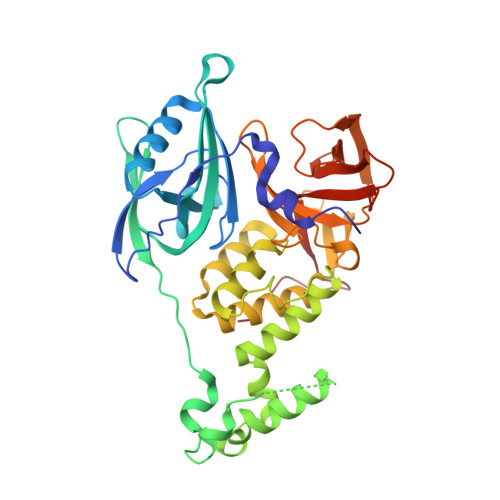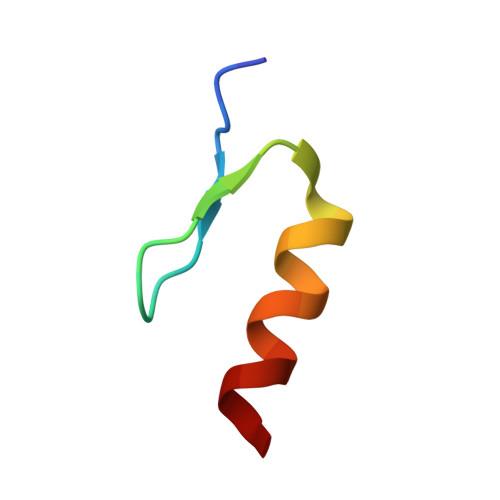Acute pharmacological degradation of Helios destabilizes regulatory T cells.
Wang, E.S., Verano, A.L., Nowak, R.P., Yuan, J.C., Donovan, K.A., Eleuteri, N.A., Yue, H., Ngo, K.H., Lizotte, P.H., Gokhale, P.C., Gray, N.S., Fischer, E.S.(2021) Nat Chem Biol 17: 711-717
- PubMed: 34035522
- DOI: https://doi.org/10.1038/s41589-021-00802-w
- Primary Citation of Related Structures:
7LPS - PubMed Abstract:
The zinc-finger transcription factor Helios is critical for maintaining the identity, anergic phenotype and suppressive activity of regulatory T (T reg ) cells. While it is an attractive target to enhance the efficacy of currently approved immunotherapies, no existing approaches can directly modulate Helios activity or abundance. Here, we report the structure-guided development of small molecules that recruit the E3 ubiquitin ligase substrate receptor cereblon to Helios, thereby promoting its degradation. Pharmacological Helios degradation destabilized the anergic phenotype and reduced the suppressive activity of T reg cells, establishing a route towards Helios-targeting therapeutics. More generally, this study provides a framework for the development of small-molecule degraders for previously unligandable targets by reprogramming E3 ligase substrate specificity.
- Department of Cancer Biology, Dana-Farber Cancer Institute, Boston, MA, USA.
Organizational Affiliation:




















